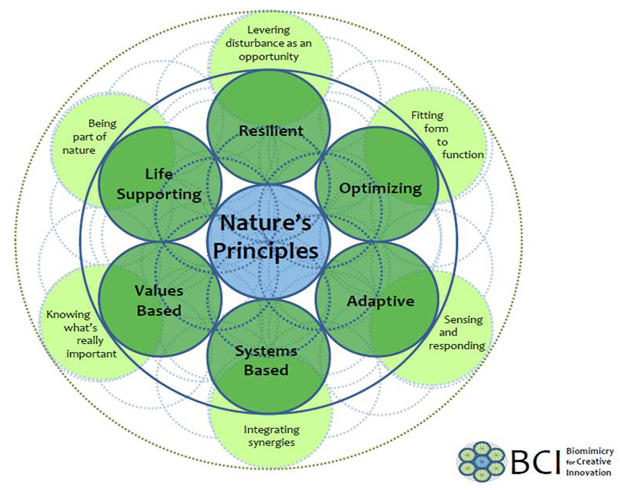The transformational times in our midst demand that organisations redesign for resilience in order to flourish in the volatile times ahead.
The most important challenge facing leaders, strategists and operational managers is a shift in logic from the out-dated mind-set of command-and-control thinking to a logic inspired by and in harmony with nature that allows us to thrive during uncertainty by opening up to emerging futures through co-creativity, networking and reciprocity. Nature’s patterns, processes and inherent grammar display a universal wisdom that we’d do well to attune to.
Whether it be at the places, products, processes, people or purpose dimensions within an organisation, embracing nature’s wisdom helps organisations flourish in these volatile times. Let’s take a brief look at these organisational dimensions:
Places
There is a shift afoot from viewing the place of work as a static estate to viewing it as a healthy, vibrant place that adapts and responds to human nature and wider nature. A design partner of Interface, David Oakey notes, ‘shape-shifting times call for inspired spaces that enable us to be connected yet distinct, like colours in a rainbow. Spaces that reflect our ability to adapt and bend and flex to meet today’s constant changes ensure our ability to survive and thrive.’
Products
Product design inspired by nature is no longer niche, with products across all sectors applying bio-inspired design from high-speed trains and aeroplane wing tips to mobile phone displays and smart grid networks. As the late Steve Jobs said, ‘I think the biggest innovations of the 21st century will be at the intersection of biology and technology. A new era is beginning.’
Processes
Not only is the design process of products transforming, but also the product life-cycle from raw material to recycling and reuse. Industrial ecology and closed-loop economics are Nature-inspired approaches taken up by many leading sustainable businesses.
People
People are perhaps the most complex part of an organisation. Business inspired by nature creates the conditions conducive to collaboration, adaptability, creativity and responsiveness; hence, enhancing the evolution of organisations from rigid, tightly managed hierarchies to dynamic living organisations that thrive and flourish within ever-changing conditions.

Purpose
While, on the surface, diverse, interconnected, emergent organisations may appear more chaotic and difficult to manage, they are vibrant places for people to become self-empowered. It is a shared value set of core ethics that ensures self-empowered diversity naturally emerges towards delivering the value creation goals of the organisation, while maintaining flexibility, adaptability and sense of purpose.
Nature’s inspiration can help us re-align minds, hearts and souls. It helps us remember that we are expressions within a deeper matrix of nature. The bright future of business lies in its scientific, sensuous and soulful understanding of nature’s wisdom beyond the confines of yesterday’s divisive logic of dog-eat-dog competition and anthropocentric separateness.